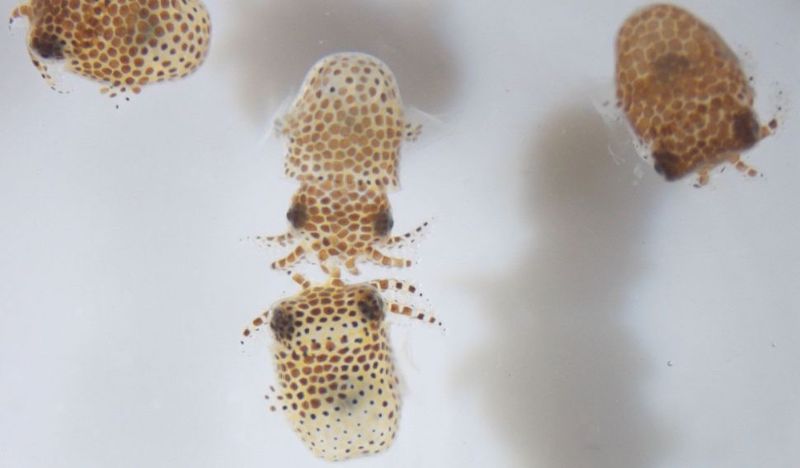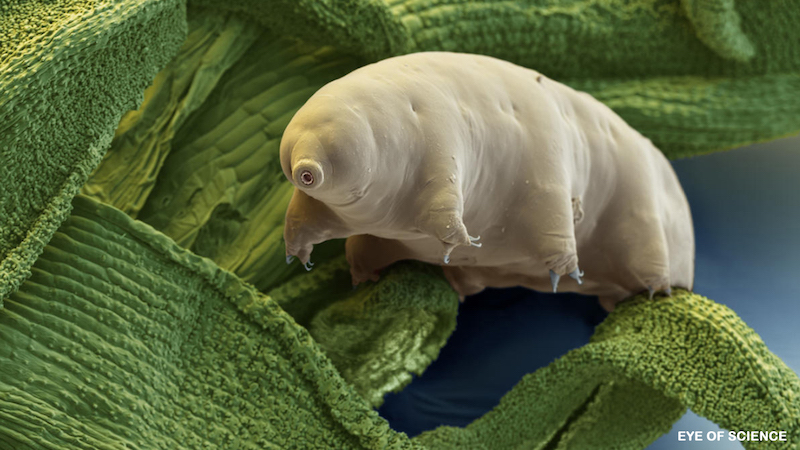
CRS-22 to launch June 3
SpaceX is preparing to launch its 22nd cargo mission to the International Space Station (ISS) this week. The mission will include more than 7,300 pounds (3,300 kg) of science materials. Research instruments, crew supplies, vehicle hardware (including new solar arrays), and some tiny organisms – including bobtail squid and tardigrades – will fly to the orbital outpost. Their ride: a shiny new Falcon 9 rocket dubbed the B1067. The CRS-22 mission will be SpaceX’s 22nd Dragon cargo launch with NASA under their Commercial Resupply Service contract together. And you can watch the launch.
If all goes well, the mission will launch from Pad 39A at the Kennedy Space Center in Florida on June 3, 2021, at 1:29 p.m. Eastern Daylight Time (17:29 UTC).
Launch activities will air live on NASA TV, as well as the NASA app and the agency’s website.
Squids in space
Newly hatched bobtail squid (Euprymna scolopes) will be among the various organisms and cargo scheduled to ship on Thursday. These cephalopods are related to the cuttlefish, and are considered to be quite interesting. They’re bioluminescent on an internal alarm clock that’s run by a species of glowing bacteria known as Vibrio fischeri.
Researchers are hopeful that these symbiotic microbes will shed light (pun intended) on how microbes in animals react to spaceflight. The research investigation will be performed by ISS astronauts on behalf of a team called the Understanding of Microgravity on Animal-Microbe Interactions. They’re otherwise known as UMAMI: not to be confused with the flavor group largely associated with seafood.
It’s expected to be a telling experiment, as microbes play a significant role in animal tissue development and maintaining human health.
UMAMI principal investigator Jamie Foster said in a statement:
Animals, including humans, rely on our microbes to maintain a healthy digestive and immune system. We do not fully understand how spaceflight alters these beneficial interactions. The UMAMI experiment uses a glow-in-the-dark bobtail squid to address these important issues in animal health.
Resilient bear-piglets
Tardigrades, also known as water bears and moss piglets, are another group of tiny crewmates arriving at the station this week. Popularly recognized for their eccentric looks and fascinating features, tardigrades are among the most resilient animals known. They’ve been found everywhere in Earth’s biosphere, from mountaintops to the deep sea and mud volcanoes, and from tropical rainforests to the Antarctic. They’ve survived exposure to extreme temperatures, extreme pressures (both high and low), air deprivation, radiation, dehydration, and starvation.
For these reasons, scientists have long been interested in the behavior of tardigrades during spaceflight and in microgravity. The research group studying the CRS-22 sample set, called Cell Science-04, is interested in understanding tardigrade gene expression. Specifically, scientists are looking to find out which genes aid in their adaption and keen survival abilities. Identifying the mechanisms used by tardigrades to protect themselves from environmental stresses could help researchers better protect astronauts.
Thomas Boothby, the project’s principal investigator, said:
Spaceflight can be a really challenging environment for organisms, including humans, who have evolved to the conditions on Earth. One of the things we are really keen to do is understand how tardigrades are surviving and reproducing in these environments and whether we can learn anything about the tricks that they are using and adapt them to safeguard astronauts.

CRS-22 due to arrive at ISS on June 5
Both experiments will run for two months aboard ISS; the tardigrades will be shipped frozen and thawed upon arrival. Other experiments include research that could help develop cotton varieties that require less water and pesticides, plus a portable ultrasound device. Also: a new way of providing tactile and visual feedback to astronauts during robotic operations.
The Crew Dragon spacecraft is predicted to arrive at the space station and autonomously dock to its Harmony module at approximately 5 a.m EDT (09:00 UTC) on Saturday, June 5.
Bottom line: The CRS-22 mission – SpaceX’s 22nd cargo launch with NASA – is gearing up to launch bobtail squid and tardigrades to the International Space Station this week, among other materials. If all goes well, it will launch from the Kennedy Space Center on June 3, 2021, at 1:29 Eastern Daylight Time (17:29 UTC).











